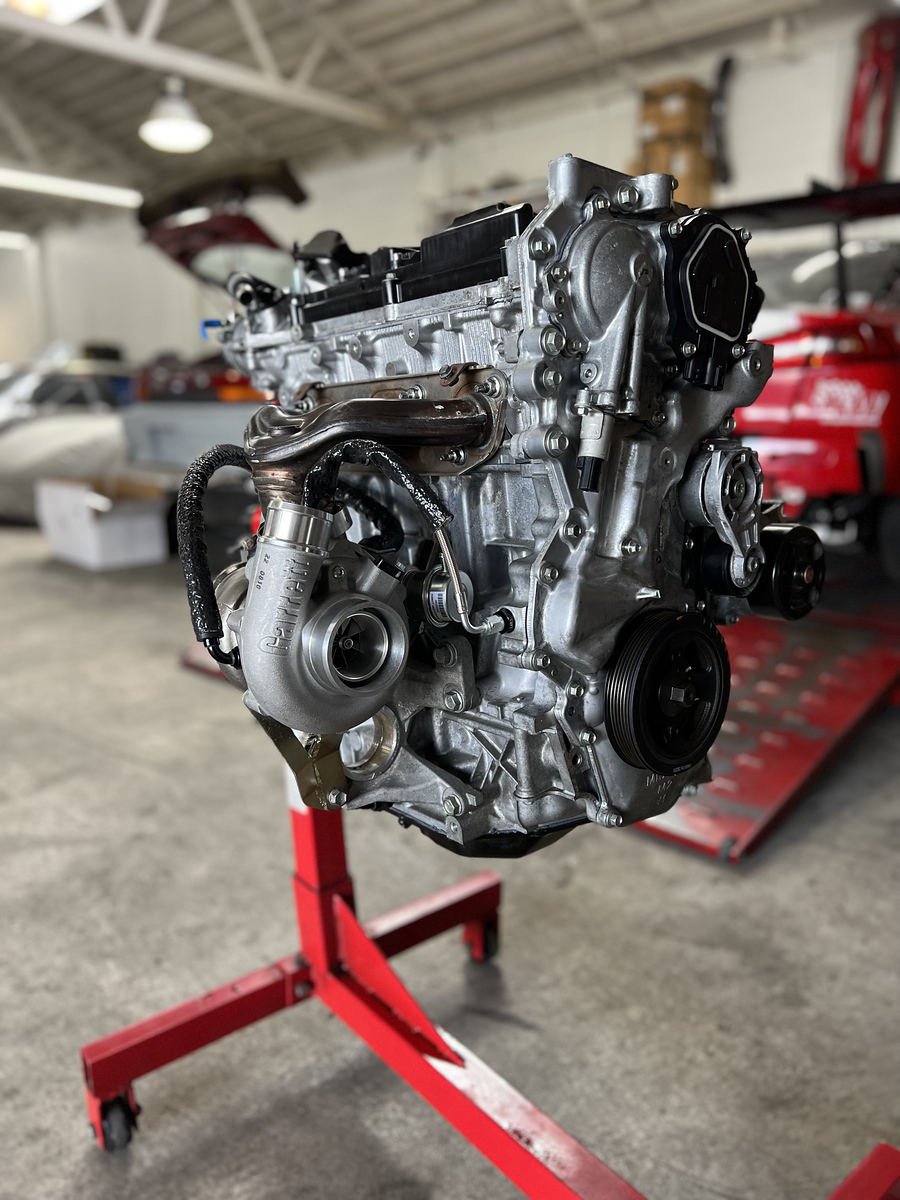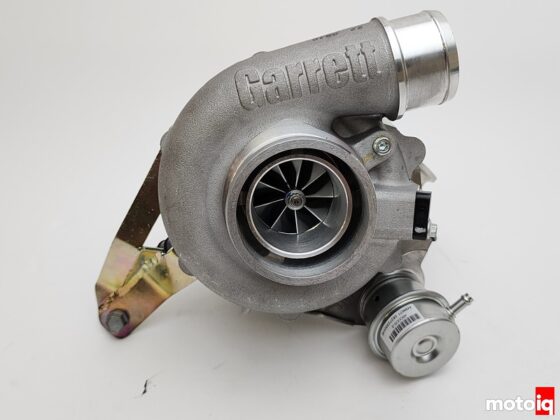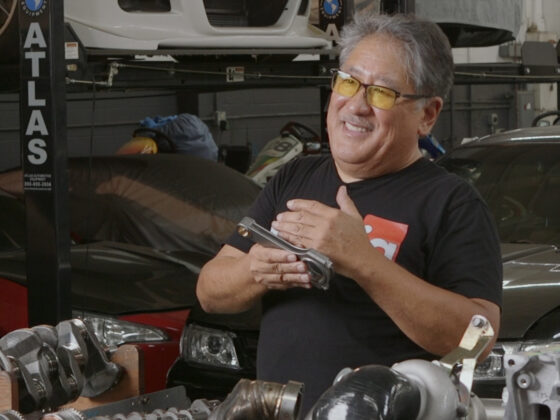
Since our new rings are Nitrided and the OEM parts were DLC coated, we had to change our cylinder wall finish. DLC-coated rings require a super smooth almost glass-like finish. Nitrided rings also require a smooth finish but will not seat with the OEM mirror-like finish. We did a 480 grit finish hone to retain more oil on the cylinder wall in anticipation of the higher load a turbo engine will produce. We then did the final surface finish with a cork-bonded plateau hone for quick ring break-in and lower friction.
When assembling the pistons, we measured the bores and the pistons to confirm the proper piston-to-wall clearance with the 2618 alloy JE pistons since they tend to expand with heat more than the OEM hypereutectic pistons. Next, we hand-set the ring end gaps to the wider side of JE spec. Turbo engines make more heat and we wanted to make sure that we would have no ring-end butting issues.

Here is a close look at our CNC Newen radius valve job and our hand blending into the intake port bowl. We also removed the valve seat bump restrictor that we talked about in previous editions of this series. Just these small mods will make a huge difference in flow. In this picture, you can see how the high-pressure direct injector blasts across instead of into the combustion chamber, this may be the reason for the intake valve ring, to tumble the intake air charge to help keep the fuel in the piston pre-chamber.

We assembled the head with the stiffer springs from a Turbo Juke, they drop right in. We Cryo and WPC treated the springs and retainers for durability.



